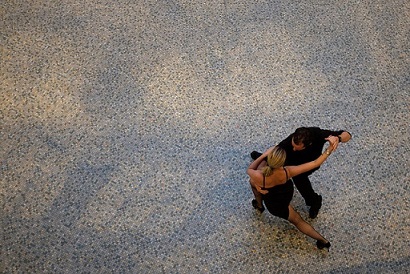
Groove?
Groove is a word familiar to most musicians and non-musicians, but it is a concept shrouded in ambiguity. “That band grooves!” or “This doesn’t groove at all” are the sort of things that people say to express an opinion or feeling about music. However, groove is certainly not abstract, but it covers so many musical aspects that it is easier to comment on groove than to single out each aspect. This article will define the word and look at key aspects which create groove.
All music should groove but not in the same way. In popular music, groove is often defined as the music’s ability to make people dance, nod their head, or move in some other way. In classical music, groove is more about stimulating an emotional response from the audience. Does the music sound sad, joyful, pensive, aggressive, etc.? All these emotions can be portrayed by groove, but which musical aspects are important in creating groove?
Dynamics
I’d like to cover four main types of dynamics.
- Articulation
- Contour
- Structural Dynamics
- Balance
Articulation
Examples of articulation are staccato, legato, pizzicato, accents, ghost notes, acciaccaturas, pressed strokes, tremolo, etc. Articulation is the ability to play any given note in different ways. Varying the volume of a note is one example of articulation. Other forms of articulation can be demonstrated by a hand clap. A strong, full palm hand clap produces a different tone from a more subtle, finger clap. These are two very different articulations created by the hands. As musicians we can enhance any melody, rhythm, groove, or chord sequence can by thinking creatively about the articulation of each note. You might want to articulate the whole phrase in the same way, which might be perfectly appropriate in certain musical situations. Other musical situations might call for you to vary your articulation more frequently. You should always be mindful of the effect the sound on the audience.
Contour
Contour refers to how a longer phrase should be phrased dynamically. Should the phrase crescendo, diminuendo, be played quietly or be played loudly. Which moments in each phrase are the biggest ones? To a certain extent this will happen naturally as the pitch increases and decreases in each phrase, but you should aim to have complete control over all different varieties of contour in order to convey any emotion you deem necessary.
Structural Dynamics
Structural dynamics refer to the overall dynamic shape of an entire piece of music. Is the chorus meant to be louder than the verses or vice versa? Should the guitar solo or the final chorus be the biggest moment of the piece? Again this depends on the style of music. In most popular music the verse is lower in intensity than the chorus, and the final chorus tends to be the biggest moment of the piece. Experiment and take care of the effect you’re producing. Lots of popular music, particularly music for dancing, tends to have a flat structural dynamic, especially if the song wants to keep people on the dance floor.
Balance
Balance refers to how well-balanced you are with other instruments in the ensemble. I like to think of it like a virtual mixing desk in which you have complete control of your own “fader” and can adjust your volume as and when you please. For example, as a drummer, if I’m playing a background jazz gig, I will have to be low in the mix. If I’m playing a rock or pop gig, I’ll generally need to be more present in the mix and play more loudly.
This mixing desk analogy can also be applied to your own solo playing. For instruments like piano or drum kit, make sure that each voice sits nicely with the other (don’t be too bass heavy, or too treble heavy). For drummers, playing rock or pop music, avoid being too heavy with the hihats. For this style of music the bass drum and particularly the snare drum should be prevalent. Each style of music has its own balance. In swing drumming, for example, the bass and snare sit low in the mix and the ride cymbal and hi hats are much louder.
Melodic instruments should also achieve the right balance across their register rather than playing bass notes louder than treble notes or vice versa.
Conclusion
Dynamics are just one aspect to making music groove and we will cover many others in our next article. Until then, try to incorporate these ideas into your practice and performing, even if that just means listening more critically to how you’re playing. Try to detach yourself from the music making process and think more as an audience member.
In the next article, we will discuss how tempo can make your music groove. This is part 6 of our article series: Making the Most of Your Practice. Check out the other articles on
⇒ Part 1: Making Practice Enjoyable
⇒ Part 2: Setting Practice Goals
⇒ Part 3: Practice Planning
⇒ Part 4: The Metronome
⇒ Part 5: The Metronome Part 2
(Photo attribution: https://www.flickr.com/photos/sblackley/29951062032 | CC BY)
